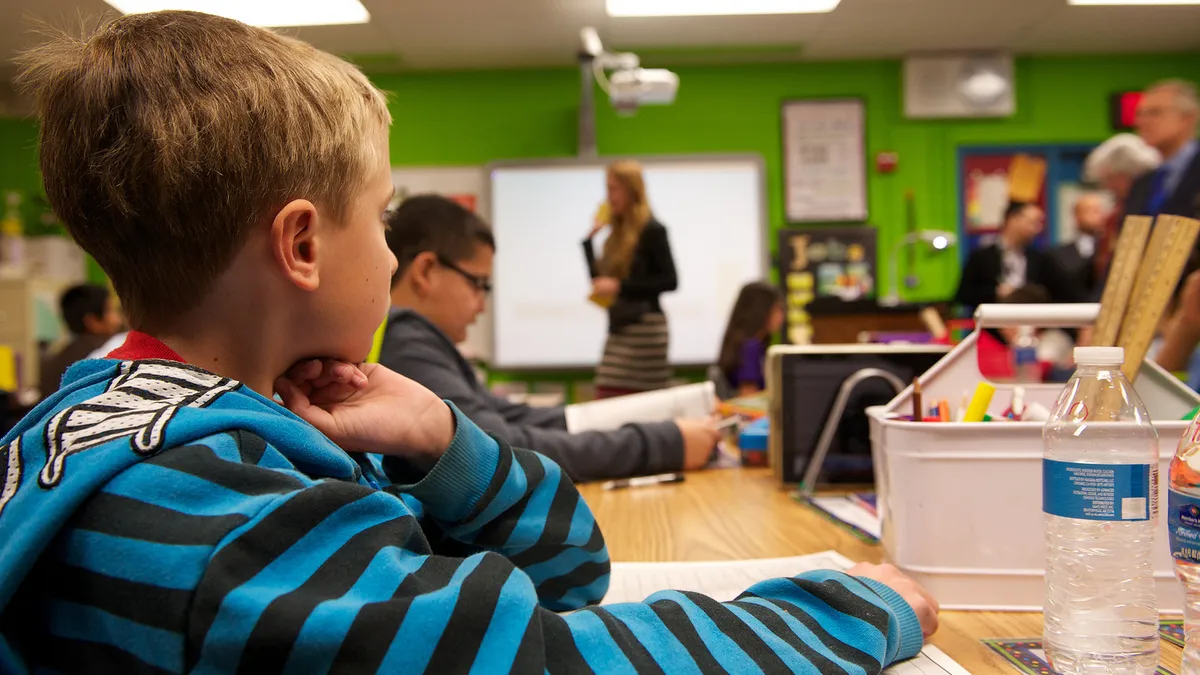Dive Brief:
- An investigation by The Hechinger Report and the Investigative Fund, produced in collaboration with NBC News, found that 115 charters have white student populations at least 20% higher than those of the traditional public schools in their districts, based on 2015-16 school year enrollment data from the U.S. Department of Education.
- A total of 48,000 students are enrolled in these charters — located in just a few states, including California, Texas and Michigan — and The Hechinger Report notes that the 20% difference is typically the benchmark for a school being "racially identifiable" in federal desegregation lawsuits.
- Some 747 public charter schools nationwide enroll a higher percentage of white students than their districts' traditional public schools, with some having white student populations as much as 78% higher. Critics suggest the policies at many charter schools, such as hard-to-afford uniforms or a lack of bus service, impede access for lower-income families.
Dive Insight:
More than six decades after the landmark desegregation ruling of Brown v. Board of Education, school segregation remains a persistent issue for many districts nationwide. And as the Hechinger Report and Investigate Fund research suggests, many charters have found themselves drawn into the debate. But the problem goes deeper than that, as there are also charters that predominantly serve students of color.
In some cases, school segregation is a byproduct of a community's demographics changing. One notable school segregation battle happened at Central High School in Tuscaloosa, Ala., where the black student population rose to 99% after integration oversight was rolled back in 2000 in an attempt to address "white flight" to private and suburban schools. Central was seeing achievement gaps close between black and white students prior to the rollback.
In New York City, efforts are also underway to address school segregation, with one area of attention being the lack of access to important entrance exams necessary to be accepted into the city's elite high schools. As NYC Schools Chancellor Richard Carranza recently told Education Dive, "In New York City — where you have 1.1 million students, one of the most diverse school systems in America, one of the most diverse cities in the world — when you look at the systems and structures that govern how students can access schools, there are some systemic barriers that prevent all students from having an opportunity to access all of the rich schools that we have."
It's ultimately a thorny, multifaceted issue that will necessitate a closer look at the make-up of local communities, the role various policies play, disparities in access some students have to options like charters, and more. A statement released by Center for Education Reform CEO Jeanne Allen claimed bias in The Hechinger Report's research, stating, "there is no balance in any piece which starts with the premise that the very reform that created opportunities for millions of children who were failed by the traditional system, and which serve a higher percentage of at risk and minority children, is creating racial imbalance. Indeed, if mandatory assignment by zip code and busing were the answer, we would not have failed students for 3 generations."













